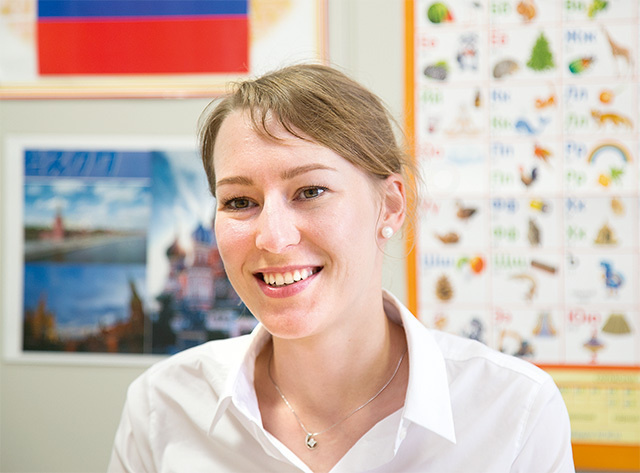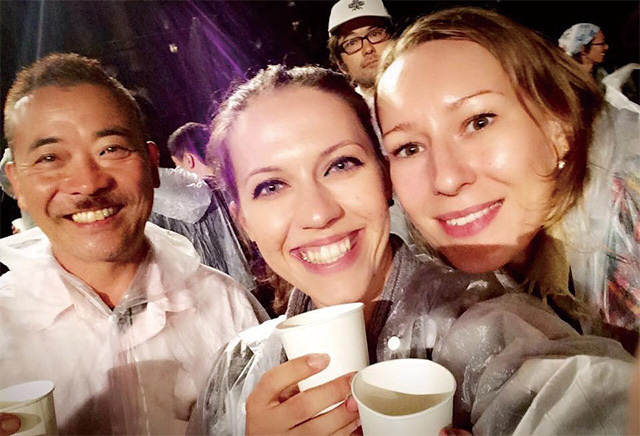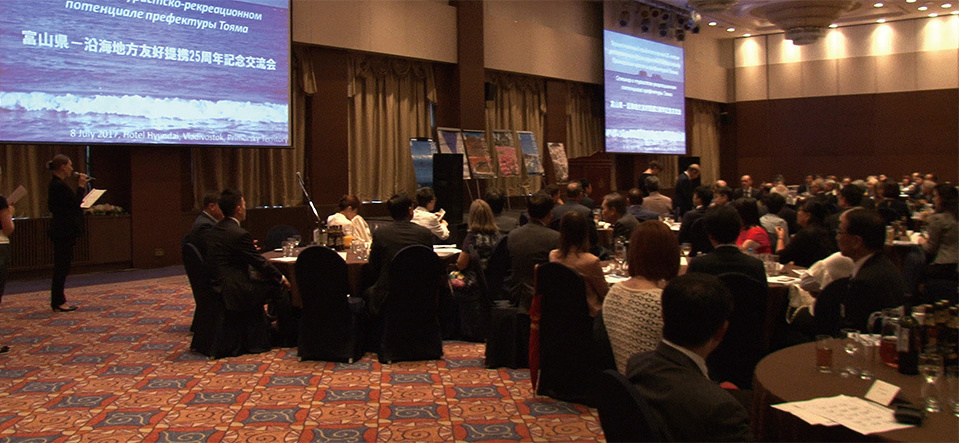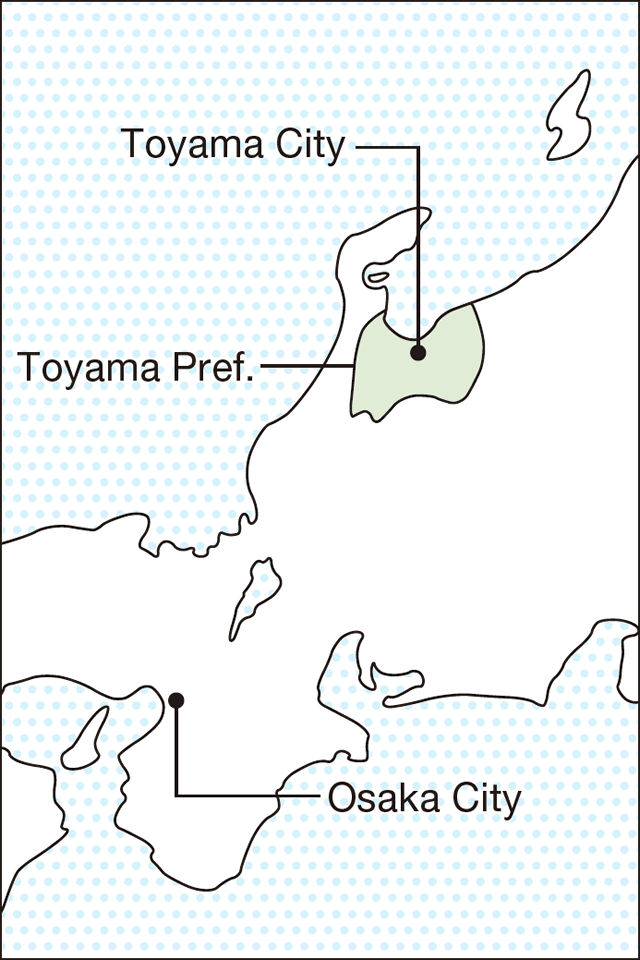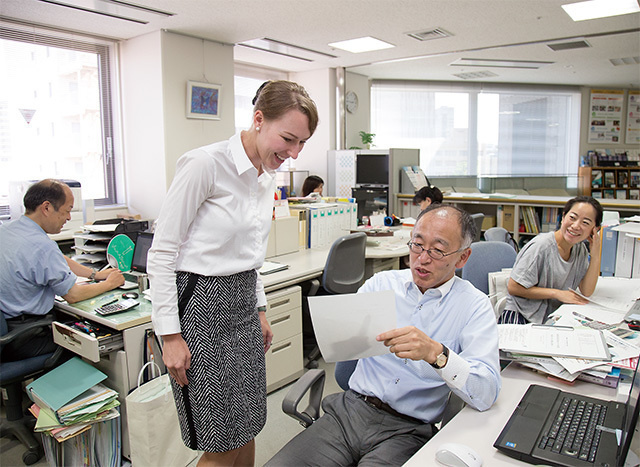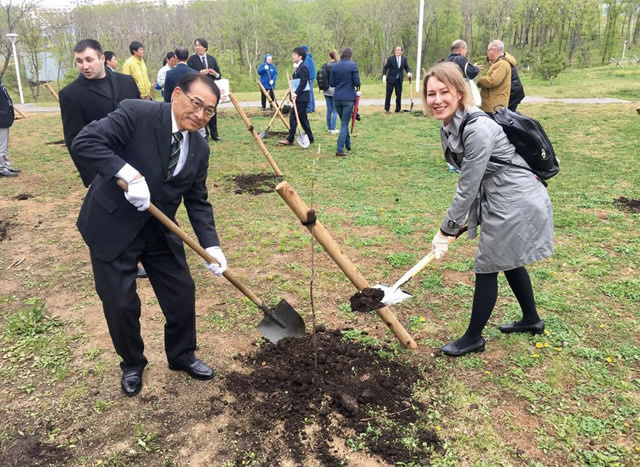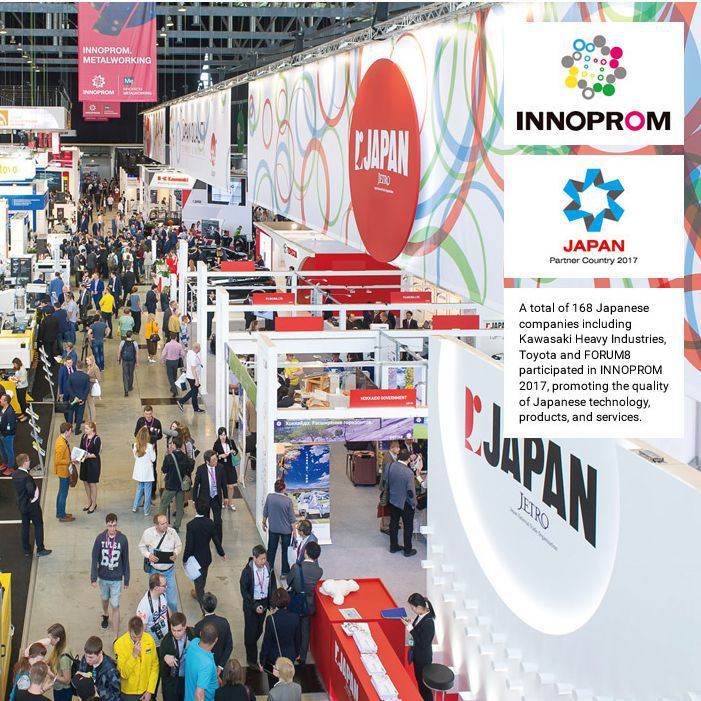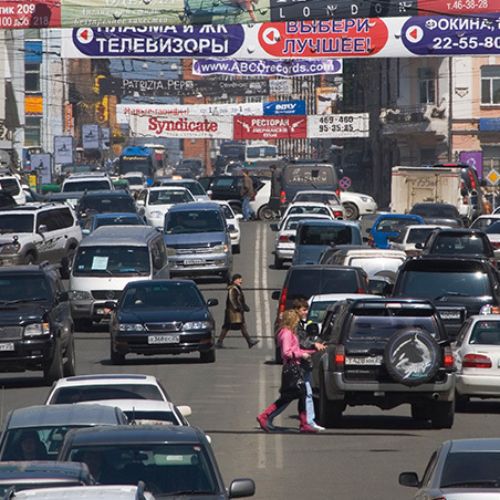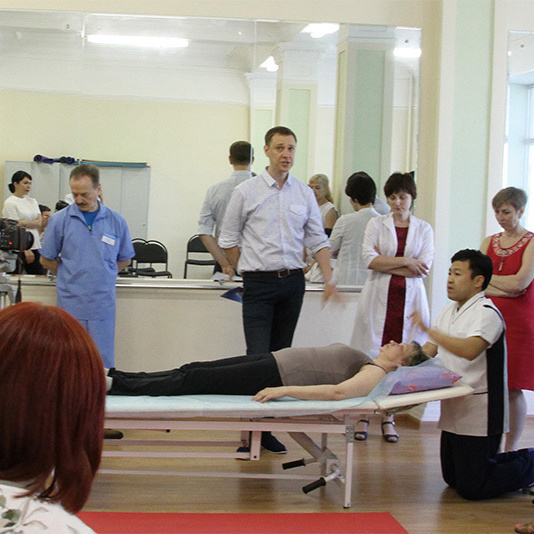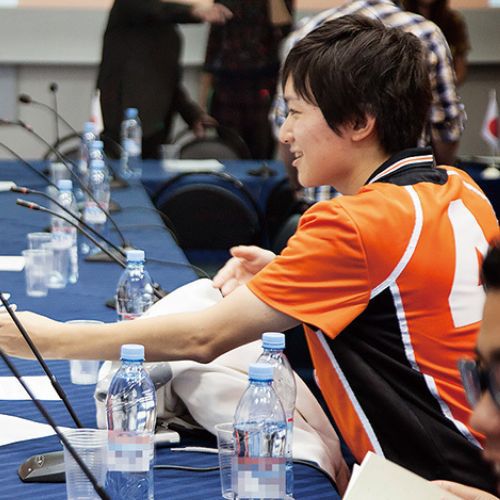Tatiana Britcina
Born in Vladivostok, Primorsky Krai (Maritime Province), Russia.
Graduated from Far Eastern Federal University. Spent a year at the University of Toyama on a prefectural scholarship before becoming a CIR at the Toyama Prefectural Office in 2013.
My uncle used to bring me candy from Japan. He was a sailor. Growing up in Vladivostok, I never imagined that one day I’d be able to read the words on those cute wrappers.
I didn’t know many foreigners, even though ships from many countries visit Vladivostok’s port. Their crews were just sailors in different uniforms to me. I was interested in art and economics, but my father suggested I study an Asian language, and I scored high enough on my exams to major in Japanese literature and language at Far Eastern Federal University. There, I became interested in intercultural relations and joined a group that supported foreign exchange students.
My first visit to Japan was in 2007 via ship. We docked in Fushiki, Toyama. I remember the strong smell of kelp, and being impressed by the Tateyama mountain range. Four years later, I returned to Toyama on a one-year university scholarship. Later I worked on the launch of a Japanese medical clinic in Vladivostok, the Hokuto Visual Diagnostic Center, doing correspondence, translating and interpreting. I wanted to go back to Japan, so when I received a letter of acceptance to be a Coordinator for International Relations (CIR) for the JET Programme in Toyama, I felt it must have been my destiny.
Climbing Oyama peak (3,003 m [9,852 ft]) of the Tateyama mountain range.
In Toga village with friends enjoying a play by the international theater group SCOT.
I love Toyama because the mountains and the sea are so close together. Tateyama has beautiful views and isn’t hard to climb. I go up every year. Toyama’s deep bay means amazing seafood, and its pure mountain water ensures good rice and sake. I’ve also become close to a Japanese family. One New Year’s Eve, we listened to Russian music, watched the Russian presidential address, and cleared snow in front of a local shrine for hatsumode (the first shrine visit of the year). It was a very cross-cultural experience!
I recently finished four years as a CIR. My work included translating, interpreting, planning events, and teaching Russian. The last few months were particularly busy. In July, Toyama and Primorsky Krai celebrated 25 years of friendship and exchange in fields like culture, economics, and sports. About 50 people from Toyama attended a commemorative event in Vladivostok, including politicians and business people. I handled everything from MC-ing the main reception to pitching Toyama’s tourism potential. I’ve been running on adrenalin ever since.
The JET Programme has been great because I’ve never been bored and there’s always something new to keep you motivated. You use your Japanese skills to do a wide range of things. Three years ago, I helped plant 150 cherry blossom trees from Toyama on the new grounds of my university in Vladivostok. We went back this year, to plant 180 more, and I was able to see the first batch in bloom. It was quite a quest—I can’t count the number of calls I made to make sure the trees were being properly watered. I worry about them in the strong, cold winds of Vladivostok, but I’m looking forward to picnicking under their blossoms in another ten years. I'm not sure what my future holds right now, but my time in Toyama has really energized me, and hope to use both my language skills and accumulated experience and knowledge to deepen Japan-Russia relations, wherever I end up.


























